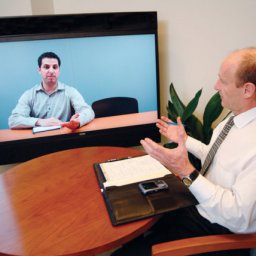Original Post by Dennis Collins
By inviting constructive feedback from their teams, successful leaders can spur innovation and growth. Here’s how to create an environment conducive to feedback that will benefit your organization.
In a recent post, we connected the escalating business trend of Digital Transformation and our blog’s mission to share tools and techniques for greater productivity and collaboration. We explored developing your sense of curiosity as a means of optimizing your effectiveness in what leadership pundits call “transfo

rmative conversations.”
One such pundit we follow is Dan Rockwell, who writes the daily Leadership Freak blog. In his post “The Leadership Pursuit That Enhances All Others” he explains that leaders in any
context become more influential when they pursue feedback, which something few of us do as often as we should.
“Short-sighted leaders love giving feedback, but seldom seek it. When was the last ti
me you said, ‘I’d like your feedback?’ You may say you don’t have time. But, it’s strange how you make time to give feedback, but not invite it?”
– Dan Rockwell
Rockwell shares five ways to pursue feedback from team members. Here’s our take on his tips and how they may play out in your meetings:
1. Be Humble, but not Silent, to Encourage Participation
“Humility fuels transformation,” Rockwell says. But if being humble in a meeting translate as silence, your influence as a transformative leader will be diminished. Even so, whenever appropriate, empower other team members to speak before you do. Boost the confidence of timid participants with prompts such as “What do you think?”
2. Focus on External Perspectives to Broaden Ideas
In our post about stoking curiosity, we encouraged you to facilitate transformative discussions by flipping your perspective – i.e., making a “deliberate effort to adopt a point of view from outside your team, your organization or even your industry.” To implement this mindset, Rockwell suggests soliciting feedback by posing questions, such as…
- What actions are we taking as a team to show others we consider their perspectives?
- What actions are we taking as a team that might be interpreted as devaluing other perspectives?
- Are we taking any actions that make it difficult for others to see our perspective?
- What actions can we take this week to clarify and articulate our perspective?
- What actions can we take this week to seek and understand another group’s perspective?
3. Don’t Let the End of the Meeting be the End of the Conversation
Transformative conversations should maintain momentum. After meetings, Rockwell recommends touching base with participants individually and asking questions.
 Questions to ask individuals post-meeting:
Questions to ask individuals post-meeting:
- Did I do or say anything in the meeting that confused you?
- Did I do or say anything that energized or de-energized you?
- If you were me, what would you have done differently?
During this dialog, explaining your intent is important – e.g., “I was trying to clear the way forward.” To focus this feedback, Rockwell says to pose follow-up questions.
Follow-up questions to improve future feedback:
- What showed my intent?
- What hindered my intent?
- What would you suggest I try next time?
4. Anticipate Feedback and Have Time in the Meeting for It
When preparing for meetings where transformative exchanges will occur, don’t just put important topics on the agenda – have a plan for discussing them, too. Five minutes jotting a few bullets that plot your storyline goes a long way. And in the spirit of our last point, solicit some feedback before your meetings. Ask a team member to review your bullets.
5. Ask for Feedback on All Parts of the Meeting, Good and Bad
“Feedback often focuses on improving what went wrong,” says Rockwell. “Invite feedback to improve what you do well.” As noted in our last post about transformative meetings, striking a balance between opposing issues is the key to high productivity.
Want to Build a More Collaborative Team? Click Here For Some Collaborative Conferencing Solutions!



